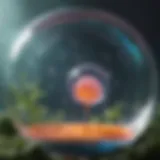Unlocking the Secrets of Slime Creation: A Detailed Guide
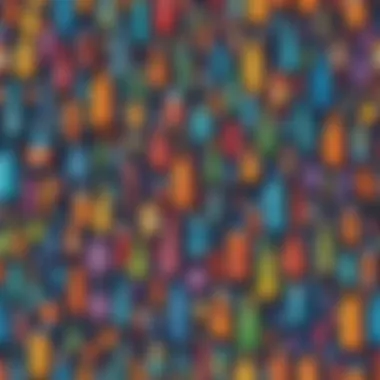

Science Fun Facts
Delving into the world of slime-making unveils some fascinating scientific facts that intrigue young minds. Did you know that the slimy texture of slime is due to the cross-linking of polyvinyl acetate molecules? A remarkable display of polymer chemistry at play, providing a sensory delight for all slime enthusiasts. Another engaging tidbit is that Borax, a common slime activator, facilitates the bonding of the glue molecules, transforming the mixture into a stretchy and moldable substance. These intriguing nuances make the process of creating slime not just fun but also a learning experience in basic chemistry principles.
Discover the Wonders of Science
The exploration of slime-making transitions seamlessly into the realm of scientific wonders. Understanding the chemical reactions underpinning this simple yet captivating activity illuminates the relevance of polymer science in everyday creations. Animated visual representations elucidate the molecular transformations, making complex concepts accessible even to the youngest budding scientists. By linking the fun of slime-making to real-world applications such as adhesives and oobleck, children gain a holistic appreciation for the scientific foundations that govern the materials around them.
Science Quiz Time
Engage in an interactive learning experience through slime-themed quizzes designed to challenge and entertain curious minds. Are you savvy enough to identify the primary ingredients needed to craft a batch of vibrant rainbow slime? Put your scientific comprehension to the test with brain teasers that unravel the mysteries behind slime's unique properties. Enhancing knowledge retention through gamified quizzes fosters a deeper understanding of the scientific processes involved, paving the way for continuous exploration and discovery in the realm of chemistry and material science.
Science Experiment Showcase
Embark on a thrilling slime-making adventure with step-by-step instructions that guarantee a successful and enlightening experimental journey. Assemble the essential materials - from white glue to saline solution - following an exhaustive list that ensures no ingredient is overlooked. Safety precautions underscore the importance of responsible scientific exploration, promoting a secure and enjoyable environment for experimentation. Embrace the hands-on approach to learning as you witness the magic of chemistry unfold in each meticulously guided step, fostering a love for scientific inquiry and innovation among young minds.
Introduction to Slime
In the enchanting realm of science experiments for young minds, slime stands out as a captivating and educational wonder. Introduction to slime symbolizes a gateway into the exploratory world of chemistry and creativity for budding scientists and curious learners. This section serves as a foundational tool, unveiling the mystique behind slime-making processes while emphasizing the fusion of fun and learning.
What is Slime?
Slime embodies a non-Newtonian fluid, exhibiting characteristics of both liquid and solid states depending on the applied force. It enthralls with its viscous texture, capable of flowing like a liquid and stretching like a solid. Delving deeper, slime consists of a polymer chain network intertwined with liquid molecules, creating its unique properties and tactile allure.
The Popularity of Slime Making
The surge in slime making's popularity transcends mere trends, offering an avenue for imaginative play and scientific discovery. Children worldwide gravitate towards slime for its sensory engagement, fostering hand-eye coordination and sensory development. This societal craze reflects a harmonious fusion of entertainment and exploratory learning, making slime an enduring favorite among young minds.
Educational Value of Slime
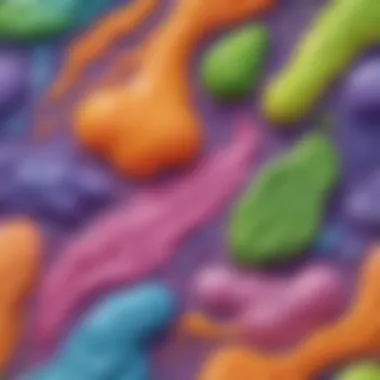

Beyond its recreational allure, slime serves as a covert educational tool, stealthily imparting scientific concepts to impressionable minds. Through the tactile experience of creating slime, children engage with chemistry principles such as polymerization and material properties. This hands-on approach to learning sparks curiosity and hands young learners a tangible link between theory and practice.
Essential Ingredients for Making Slime
In the realm of making slime, understanding the pivotal role of essential ingredients is paramount. Each component plays a crucial part in the creation of this gooey concoction, elevating it from a mere mixture to a captivating sensory experience. Delving into the realm of slime-making unveils an intricate dance between various elements, each contributing its unique characteristics to the final product. The amalgamation of these ingredients transforms a mundane experiment into an exciting exploration of chemistry and creativity.
PVA Glue
At the forefront of slime creation stands PVA glue, a fundamental ingredient that serves as the base of the concoction. Known for its adhesive properties, PVA glue forms the structure of the slime, providing the sticky consistency that allows for molding and shaping. This glue acts as the backbone of the slime, holding together other components and ensuring the final product's integrity. When selecting PVA glue for slime-making endeavors, opt for a high-quality, non-toxic variant to guarantee a safe and enjoyable experience for all participants.
Borax or Saline Solution
The activation agent in slime-making, Borax or saline solution, acts as the catalyst that transforms the glue-water mixture into a stretchy and elastic substance. By interacting with the polymer chains in the glue, Borax or saline solution creates cross-links that give slime its characteristic viscosity and pliability. When incorporating Borax or saline solution into the slime mixture, exercise caution and moderation to achieve the desired consistency without compromising on safety.
Water
An often-overlooked yet essential ingredient in slime-making is water. Serving as the medium for blending PVA glue and other components, water plays a vital role in maintaining the proper balance of the concoction. The amount of water added influences the slime's texture and malleability, determining whether the final product is runny or firm. As a facilitator of chemical reactions between glue and activators, water is a critical element that requires careful consideration during the slime-making process.
Food Coloring or Pigment
To infuse vibrancy and visual appeal into slime, the incorporation of food coloring or pigment is indispensable. This component allows for personalized customization of slime, enabling creators to experiment with a spectrum of hues and shades. Whether opting for a single color or blending multiple pigments, the choice of food coloring imbues slime with a vibrant aesthetic that enhances sensory engagement and creativity. When working with food coloring, exercise caution to prevent staining and ensure a pleasant sensory experience.
Misotype: Optional: Glitter or Beads for Texture
Safety Precautions and Tips
Ensuring safety is paramount when embarking on the exciting world of slime-making. By implementing the necessary safety precautions and tips, you can make this experience not only entertaining but also secure. It is crucial to follow these guidelines to prevent any mishaps and ensure a smooth slime-making process. Firstly, adequate adult supervision is essential during the entire slime-making activity. An adult should oversee the process from start to finish, guiding and assisting the young slime creators as needed. This supervision is crucial to handle any unforeseen circumstances promptly. Next, handling chemicals safely is of utmost importance. Whether using PVA glue, borax, or saline solution, it is vital to follow the instructions carefully and avoid direct contact with these substances. Gloves should be worn whenever dealing with chemicals to protect the skin. Additionally, protective gear recommendations play a vital role in maintaining safety. Goggles are recommended to shield the eyes from accidental splashes of chemicals, while an apron can protect clothing from spills. By incorporating these safety measures into the slime-making process, you can ensure a safe and enjoyable experience for all involved.
Ensuring Adult Supervision
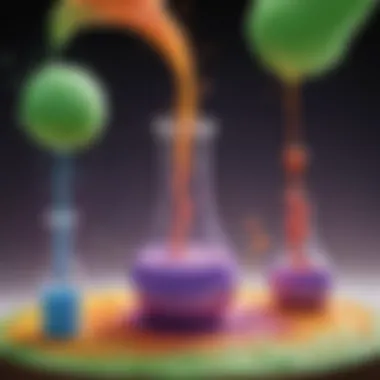

When it comes to creating slime, having an adult present is non-negotiable. Adult supervision is more than just a recommendation; it is a must for ensuring the safety of young slime enthusiasts. Adults are not only there to oversee the process but also to guide children in following instructions accurately. Moreover, adults are adept at handling any emergencies that may arise during the slime-making activity. Their presence provides a sense of security and reassurance, creating a conducive environment for learning and fun.
Handling Chemicals Safely
Handling chemicals safely is a critical aspect of slime-making. Children should be taught from the outset to treat all substances with care and respect. Whether it is pouring PVA glue or mixing in borax, each step involving chemicals requires attention to detail. It is essential to store chemicals properly after use and keep them out of reach of young children. By instilling good safety practices early on, children can develop a responsible attitude towards handling chemicals, fostering a safe and educational slime-making experience.
Protective Gear Recommendations
To minimize the risk of accidents during slime-making, the use of protective gear is highly recommended. Goggles protect the eyes from any splashes or fumes that may occur while handling chemicals. Additionally, an apron can safeguard clothing from spills and stains. These simple safety measures go a long way in ensuring a worry-free slime-making session. By incorporating protective gear into the slime-making routine, you can create a safe and controlled environment for young scientists to explore the fascinating world of slime.
Step-by-Step Guide to Making Slime
The step-by-step guide to making slime is a fundamental aspect of the slime-making process. Understanding each step intricately ensures the successful creation of slime, providing an educational and enjoyable experience for children. Following a structured guide helps in developing scientific curiosity and introducing young minds to basic chemistry principles in a fun and interactive manner.
1. Mixing Glue and Water
The first crucial step in creating slime is thoroughly mixing PVA glue with water. This forms the base of the slime, giving it the necessary consistency and adhesive properties. The glue-water mixture acts as a bonding agent, allowing other ingredients to incorporate effectively. It is essential to achieve a homogeneous blend to ensure the slime's desired texture and elasticity. Children can observe the transformation of the liquid components into a sticky, semi-solid substance, fostering a sense of wonder and engagement with the scientific process.
2. Activating the Slime with Borax
Activating the slime with Borax is a pivotal stage that triggers the polymerization process, transforming the glue mixture into a cohesive and moldable material. Borax acts as a cross-linking agent, linking the glue molecules together to form a polymer chain. This reaction is vital for giving slime its characteristic stretchy and squishy texture. Adult supervision is recommended during this step to ensure safe handling of Borax and adherence to proper mixing ratios. Encouraging children to observe the changes in the mixture as Borax is added fosters an understanding of chemical reactions and polymer formation.
3. Adding Color and Texture
Enhancing the visual appeal of the slime involves adding colorants and texture-enhancing elements. Food coloring or pigment can be incorporated to create vibrant and personalized slime variations. The careful selection of colors allows children to express their creativity and preferences while learning about color mixing concepts. Additionally, opting for glitter, beads, or other textured additives introduces sensorial dimensions to the slime, promoting tactile exploration and sensory stimulation. Experimenting with different combinations of colors and textures encourages critical thinking and artistic expression among young slime makers.
4. Kneading and Playing with the Slime
Once all components are combined, the final step involves kneading and playing with the slime to achieve the desired consistency and elasticity. Kneading helps evenly distribute color and additives, ensuring a uniform appearance throughout the slime. Moreover, manipulating the slime through stretching, squishing, and shaping activities enhances fine motor skills and sensory development in children. The hands-on experience of kneading and playing with slime reinforces scientific concepts related to polymers and non-Newtonian fluids, making learning both tangible and enjoyable.
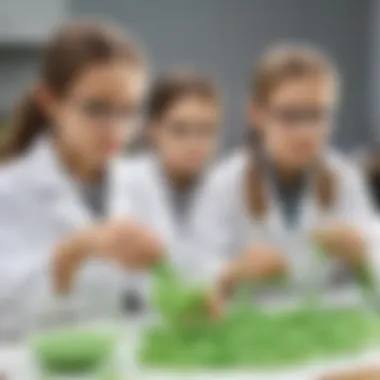

:"## Clear Slime
Clear Slime, as the name suggests, is a type of slime that offers a crisp and transparent appearance, providing a visual treat for young scientists. Formed through a precise combination of ingredients,including PVA glue and a suitable activator**,操,** this slime variant showcases the fundamentals of polymer chemistry and the importance of proper measurements in scientific experimentation.
To create clear slime, pondcmersanisi go ders experience a transformation as they witness the liquid components merge and undergo a CHEsearche change, culminating in a glossy and see-through masterpiece. By following meticulous instructions and exercising patience during the mixing process, children can observe the chemical reactions that result in the formation of clear slime, enhancing their understanding of cause and effect relationships in science.
Experimenting with clear slime also encourages young scientists to ediex selyintlirem sheu the importance of observation and attention to detail in scientific endeavors. By noting any inconsistencies in texture or clarity during the slime-making process, children can adjust their approach and troubleshoot effectively, honing their problem-solving skills and scientific acumen.
Fluffy Slime
aA medium ooceenrr of the lessonfla, fluffy slime illustrates the concept of air snsseeatios necation within substances, demonstrating how incorporating air pockets can alter the texture and consistency of a material. Through hands-on engagement with fluffy slime, young scientists can experiment with the principles of volume and density, fostering a deeper understanding of material science and its applications.
Moreover, the creation of fluffy slime yncoura gsientils children to explore creativity and customization in their scientific pursuits. By adding oggifique t vill a, glitter, or other embellishments, young scientists can personalize their slime creations and investigate how different ularesde erhnt had materials interact and affect the properties of the final product. This experimentation not only sparks imagination but also nurtures a sense of curiosity and innovation in young minds.
Butter Slime
Butter Slime, known for its smooth and moldable consistency, offers a unique **ensenrxpier **perience in the realm of slime-making. By blending traditional slime components with ownla–Neato nian behavior, children can observe the intriguing properties of non-Newtonian fluids firsthand through the creation of butter slime.
*jobeyusnfisd Implementing ingredients such as clay or modeling al v compounds, butter slime undergoes a fascinating transformation from a malleable form to a more fluid state when subjected to pressure or manipulation. This phenomenon showcases the fluid dynamics inherent in butter slime and introduces young scientists to the concept of shear stress and viscosity in materials.
ugo tees said that butter slime allows children to not only engage with scientific principles but also explore the intersection of art and science. By sculpting shapes and structures from the malleable slime, young minds can experiment with design and aesthetics, **letsiaimap rintel **leading to a cross-disciplinary approach to creativity and innovation.
Furthermore, the sensory engagement offered by butter slime ang alesch icldro) helps children develop fine motor skills and dexterity as they knead, shape, and mold the slime. This hands-on interaction promotes sensory learning and spatial awareness, contributing to iatuexscps elo broader cognitive and physical development in young learners.Overall, exploring the world of butter slime provides a multidimensional learning experience that combines scientific inquiry with artistic expression, fostering a holistic approach to education."
Conclusion
In the culminating part of this exhaustive discourse on the science behind making slime, it becomes vividly apparent that slime fabrication extends far beyond a mere recreational activity. The understanding imparted here transcends the ephemeral tactile pleasure of handling slimy concoctions to fundamentally delving into the realm of chemical reactions and material science. By partaking in the art of crafting slime, young minds are subconsciously being nurtured in the ways of scientific exploration and discovery. The significance of grasping the process of creating slime lies not just in the mere act itself but also in the cognitive stimulation it bestows; fostering critical thinking and investigative skills crucial for budding scientists of tomorrow. Above all, this conclusive segment serves as a reminder that even the simplest of scientific undertakings can plant the seeds of inquisitiveness, setting the stage for a lifelong pursuit of knowledge and understanding.
Fun and Educational Experience
Embarking on the journey of making slime unveils a plethora of delightful and enlightening experiences for all involved. From the sheer joy of mixing the vibrant colors to the mesmerizing transformation of ingredients into a squishy delight, every stage of slime creation encapsulates moments of sheer delight and wonder. Children engaging in this hands-on activity not only revel in the tactile sensations but also unknowingly absorb valuable scientific concepts. The twists and turns involved in slime-making mimic the unpredictable nature of chemical reactions, subtly cultivating an interest in the empirical sciences. What might seem like unadulterated fun holds within it the seeds of knowledge, making slime creation a harmonious blend of play and education.
Encouraging Scientific Curiosity
The essence of scientific curiosity blossoms profusely in the realm of slime-making. This seemingly simple activity acts as a gateway towards a broader understanding of chemistry and material sciences, igniting a spark of interest that could potentially blaze into a lifelong passion for scientific exploration. Encouraging children to question, experiment, and investigate during the process of making slime not only enhances their comprehension of scientific principles but also fuels their innate curiosity to seek answers. As young scientists knead, mix, and explore the realms of slime, they are unknowingly paving the way for a future where scientific inquiry and curiosity reign supreme, molding them into tomorrow's innovators and problem solvers.
